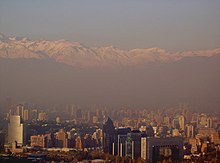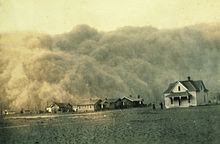Health effects
The World Health Organization states that 2.4 million people die each year from causes directly attributable to air pollution, with 1.5 million of these deaths attributable to indoor air pollution.
[14] "Epidemiological studies suggest that more than 500,000 Americans die each year from cardiopulmonary disease linked to breathing fine particle air pollution. . ."
[15] A study by the University of Birmingham has shown a strong correlation between pneumonia related deaths and air pollution from motor vehicles.
[16] Worldwide more deaths per year are linked to air pollution than to automobile accidents.
[citation needed] Published in 2005 suggests that 310,000 Europeans die from air pollution annually.
[citation needed] Causes of deaths include aggravated asthma, emphysema, lung and heart diseases, and respiratory allergies.
[citation needed] The US EPA estimates that a proposed set of changes in diesel engine technology (
Tier 2) could result in 12,000 fewer
premature mortalities, 15,000 fewer heart attacks, 6,000 fewer emergency room visits by children with asthma, and 8,900 fewer respiratory-related hospital admissions each year in the United States.
[citation needed]
The worst short term civilian pollution crisis in India was the 1984 Bhopal Disaster.
[17] Leaked industrial vapours from the Union Carbide factory, belonging to Union Carbide, Inc., U.S.A., killed more than 25,000 people outright and injured anywhere from 150,000 to 600,000. The United Kingdom suffered its worst air pollution event when the December 4 Great Smog of 1952 formed over London. In six days more than 4,000 died, and 8,000 more died within the following months.
[citation needed] An accidental leak of anthrax spores from a biological warfare laboratory in the former USSR in 1979 near Sverdlovsk is believed to have been the cause of hundreds of civilian deaths.
[citation needed] The worst single incident of air pollution to occur in the United States of America occurred in Donora, Pennsylvania in late October, 1948, when 20 people died and over 7,000 were injured.
[18]
 Air pollution is the introduction of chemicals, particulate matter, or biological materials that cause harm or discomfort to humans or other living organisms, or cause damage to the natural environment or built environment, into the atmosphere.
Air pollution is the introduction of chemicals, particulate matter, or biological materials that cause harm or discomfort to humans or other living organisms, or cause damage to the natural environment or built environment, into the atmosphere.




